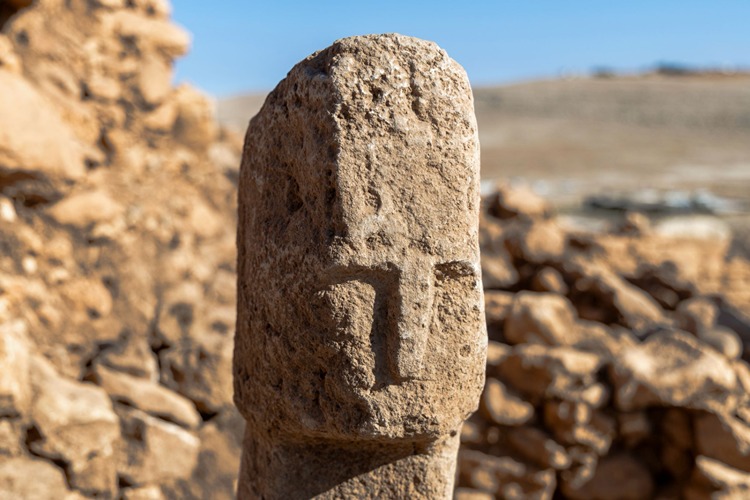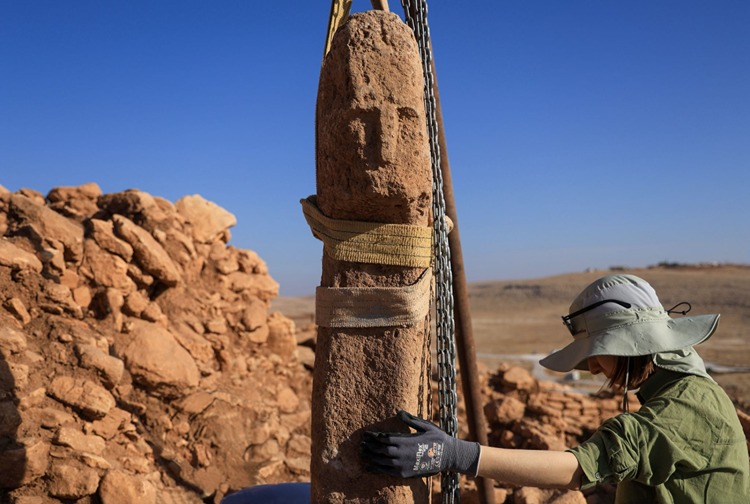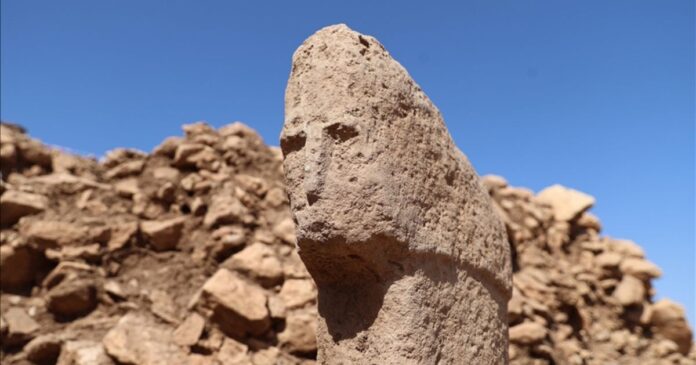Karahantepe, Türkiye — Archaeologists have uncovered the first known T-shaped monolith with a human face, dating back nearly 12,000 years.
The discovery, announced by Türkiye’s Ministry of Culture and Tourism, marks a new chapter in early Neolithic art and symbolism.
The find comes from Karahantepe, one of the key sites in the Taş Tepeler (Stone Hills) Project, directed by Prof. Dr. Necmi Karul.
A Landmark Discovery in Neolithic Archaeology
Minister of Culture and Tourism Mehmet Nuri Ersoy shared the discovery publicly, stating:
“For the first time, a T-shaped monolith bearing a human face has been uncovered during the excavations conducted under the Taş Tepeler Project.”
The monolith shows clear facial contours, deep-set eyes, and a sharply defined nose. Its gaze seems to reach across time, linking the modern world with Anatolia’s earliest inhabitants.
Researchers say this could be the earliest known human face carved on a T-shaped pillar. The find marks a major step in understanding how Neolithic people saw and portrayed themselves.

From Symbol to Portrait: Redefining the T-Shaped Pillar
Scholars often interpret the T-shaped pillars at sites like Göbeklitepe as abstract human forms — stylized bodies rather than real portraits.
The face carving at Karahantepe changes that view. It provides the first solid evidence that some monoliths were meant to depict real people, not just symbols.
Archaeologists note the geometric and minimal facial style resembles smaller human figurines found at the site. This suggests a shared artistic tradition among the builders.

The Taş Tepeler Project: Tracing the Origins of Civilization
The Taş Tepeler Project studies over ten Neolithic sites in southeastern Turkey. Each site reveals clues about early settlements, rituals, and belief systems.
Prof. Dr. Necmi Karul calls the discovery “one of the most remarkable findings of the year.” It offers key insight into early human identity and artistic expression.
The Legacy to the Future Initiative has boosted research and preservation work, helping protect these priceless archaeological treasures for future generations.
A Window to Humanity’s First Reflections
This newly discovered monolith offers more than a glimpse of ancient craftsmanship — it represents humanity’s first known attempt to project the human face onto stone.
It bridges 12,000 years of history, inviting us to meet the gaze of our ancestors and recognize the shared thread that connects us to the world’s earliest civilizations.
Source: Anadolu Agency (AA)
For more on the Taş Tepeler project check out: Over 50 Neolithic Structures Found in Şanlıurfa

